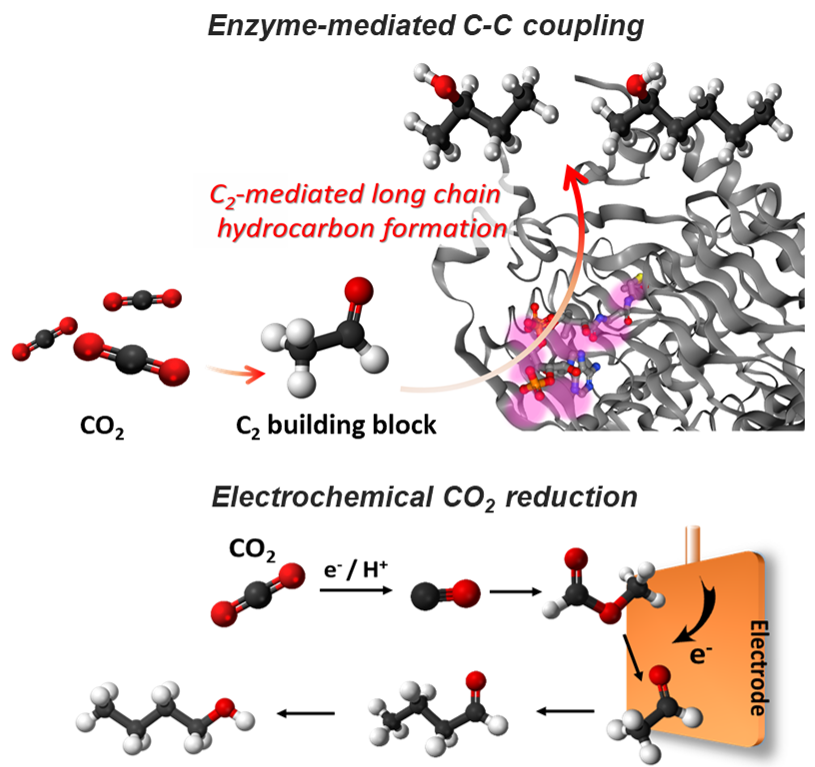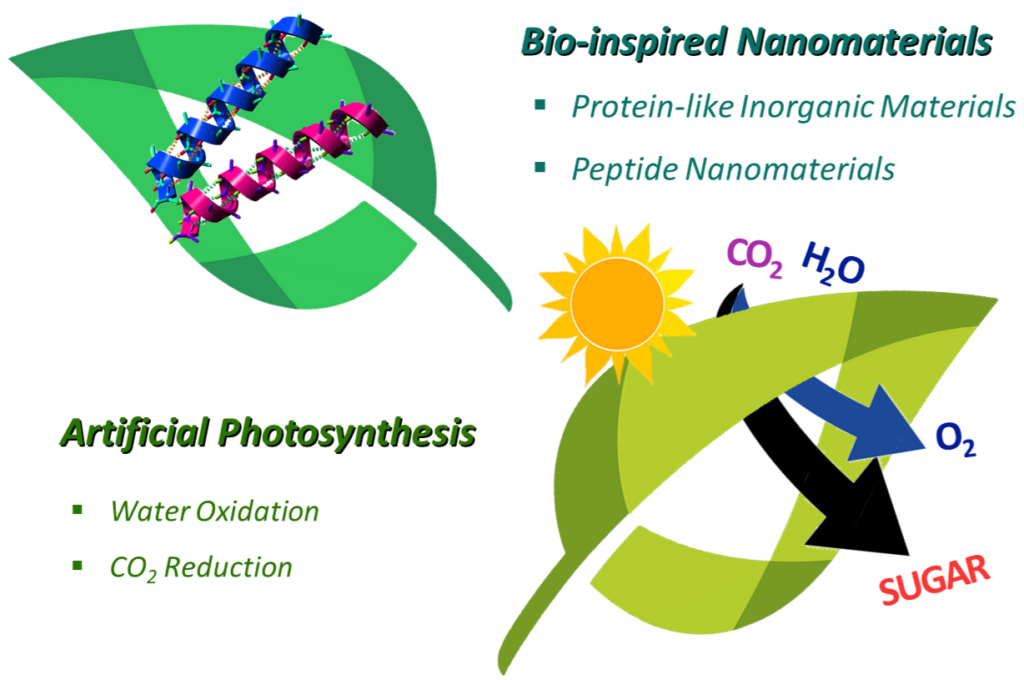“How can biological systems inspire and improve materials science understanding?”
Our research group is pioneering the research field of the interface of biology and materials.
Based on the understanding at the molecular level, we study 1) new hybrid materials of inorganic materials and peptides, 2) bioinspired catalyzing materials, 3) biological photosystem-mimetic devices and 4) self assembly of peptides.
In materials science perpectives, we study protein like nanomaterials with the atomically defined 3D strutures and chirality controlled inorganic materials. In addition to the interface issue, we investigate the mechanism of C-C bonding and O-O bonding formation during the electrocatalytic reaction, inspired by the biological photosystem.
▶ Bio-inspired Nanomaterials
▶ Artificial Photosynthesis
Understanding the peptide self assembly and interface with inroganic materials for impossible materials
Protein-like Inorganic Materials
Understanding asymmetric interactions between biomolecule and mineral for protein-like inorganic materials
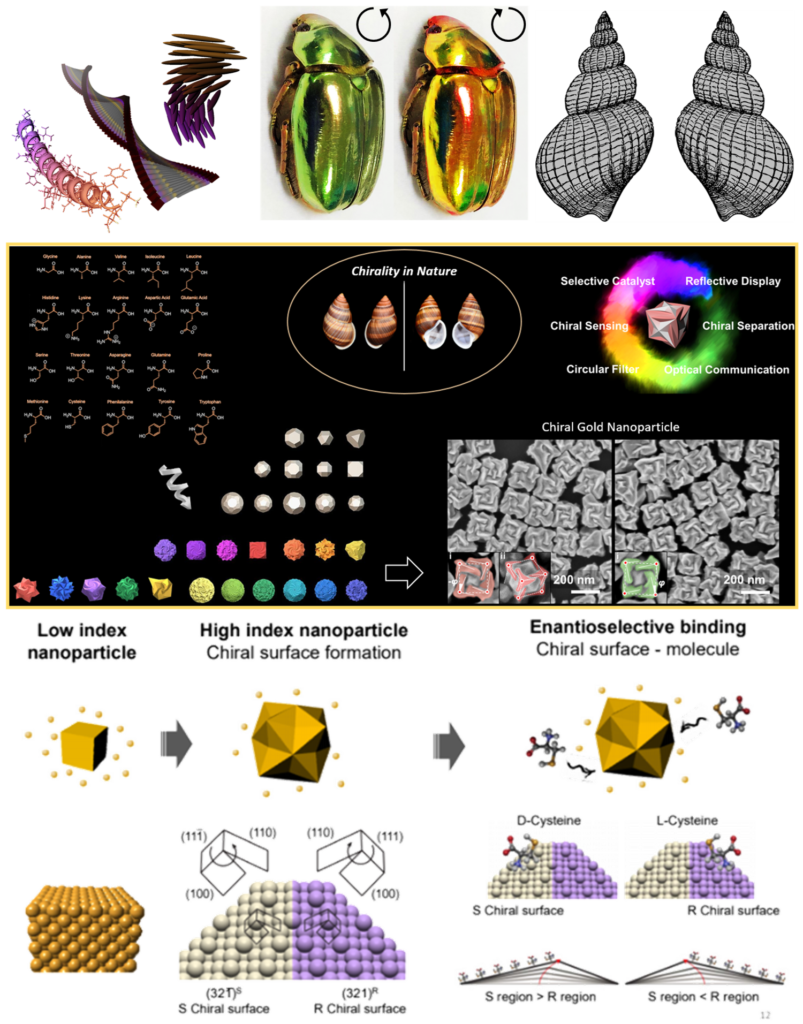
Peptide Nanomaterials
Designing tyrosine based peptides for the 2D materials applications – transitor and sensor
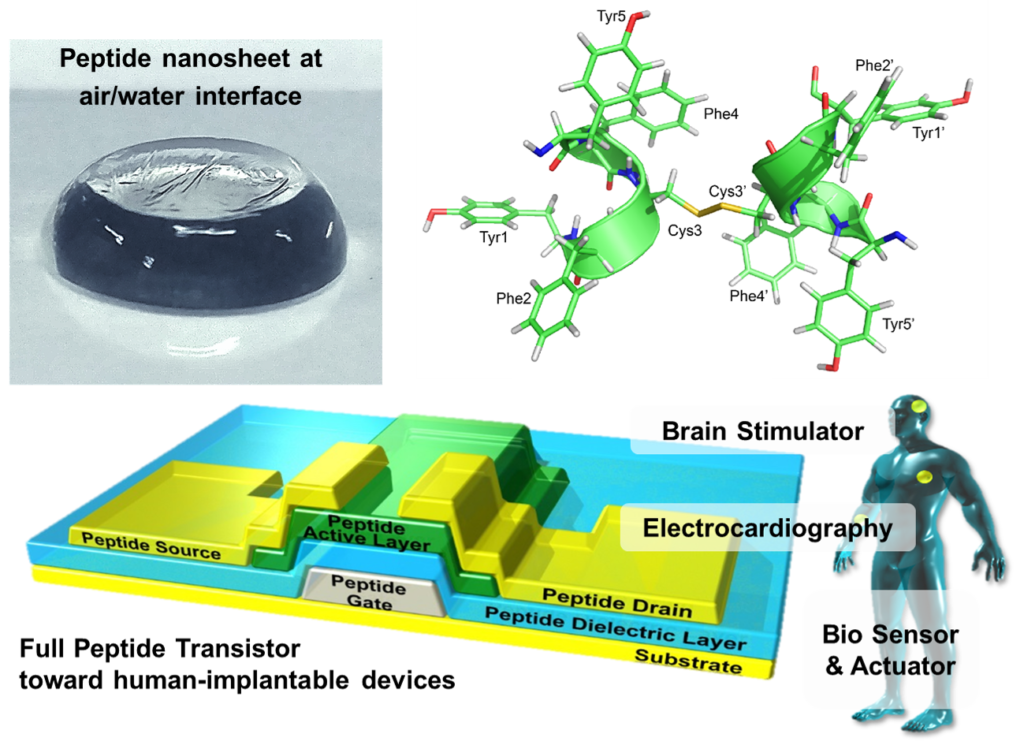
Understanding the catalytic mechanisms of natural photosynthesis and discovering highly selective catalysts for energy production
Water Oxidation
Overcoming the existing scaling relation through actualizing bio-inspired d-orbital manifold catalyzing materials
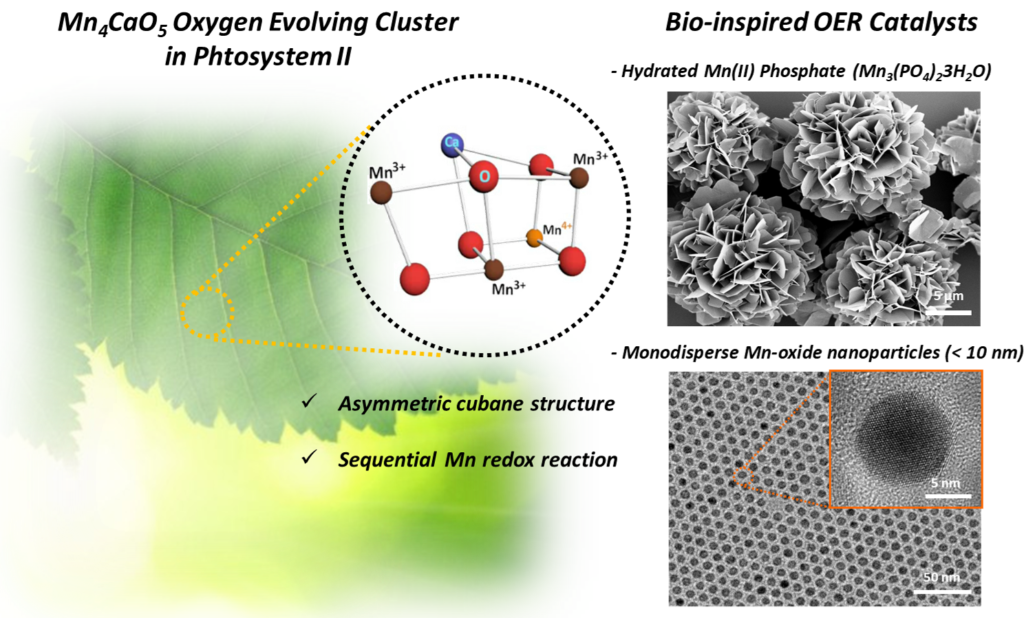
CO2 Reduction
Developing synthetic catalyst for electrochemical conversion of CO2 towards value-added hydrocarbon fuels
